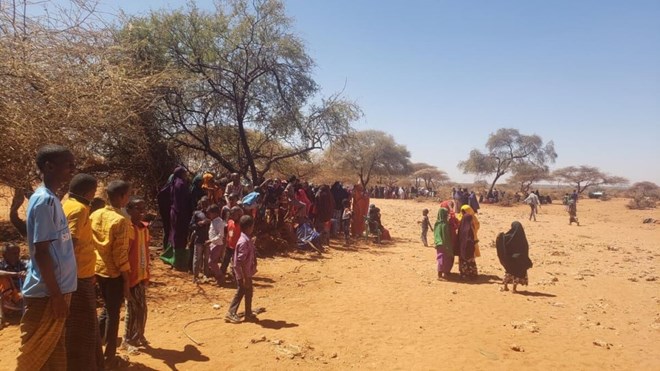According to the UNHCR, refugee families are biometrically registered upon arrival and given a tent and other critical aid goods to help them establish a new home. /CFP Photograph
The UN High Commissioner for Refugees (UNHCR) announced on Tuesday that it has begun relocating newly arrived Somali refugees in Ethiopia who fled recurring clashes between security forces and clan leaders in Las Anod, northern Somalia, with 1,036 of the most vulnerable people transferred from border areas to a new settlement over the past three days.
Thousands of people have come in Ethiopia’s Somali region seeking shelter since clashes began in mid-February, according to the UN refugee agency.
According to the UNHCR, as of last week, 91,000 persons have been registered by Ethiopia’s Refugees and Returnees Agency with UNHCR assistance, and refugees continue to arrive, fleeing continuous violence in their home country.
“The majority are women, children, and the elderly. There are around 3,400 unaccompanied and separated children and adolescents among them “It stated.
According to the UNHCR, refugee families are biometrically registered upon arrival and given a tent and other critical aid goods to help them establish a new home. Ethiopia has graciously provided 400 hectares of land for refugees to reside and enjoy existing facilities such as health care, water, and education.
While many refugees are being welcomed in Ethiopian homes by Ethiopian families, others who have crossed into Ethiopia remain in congested shelters or are sleeping outside and require immediate aid.
In March, the UNHCR and humanitarian partners announced a 116 million US dollar inter-agency emergency refugee response plan to meet the immediate severe needs of refugees and host communities in this area.
According to the UNHCR, Ethiopia has been welcoming migrants for decades and currently accommodates about 990,000 refugees from surrounding countries such as South Sudan, Somalia, Eritrea, and Sudan.

